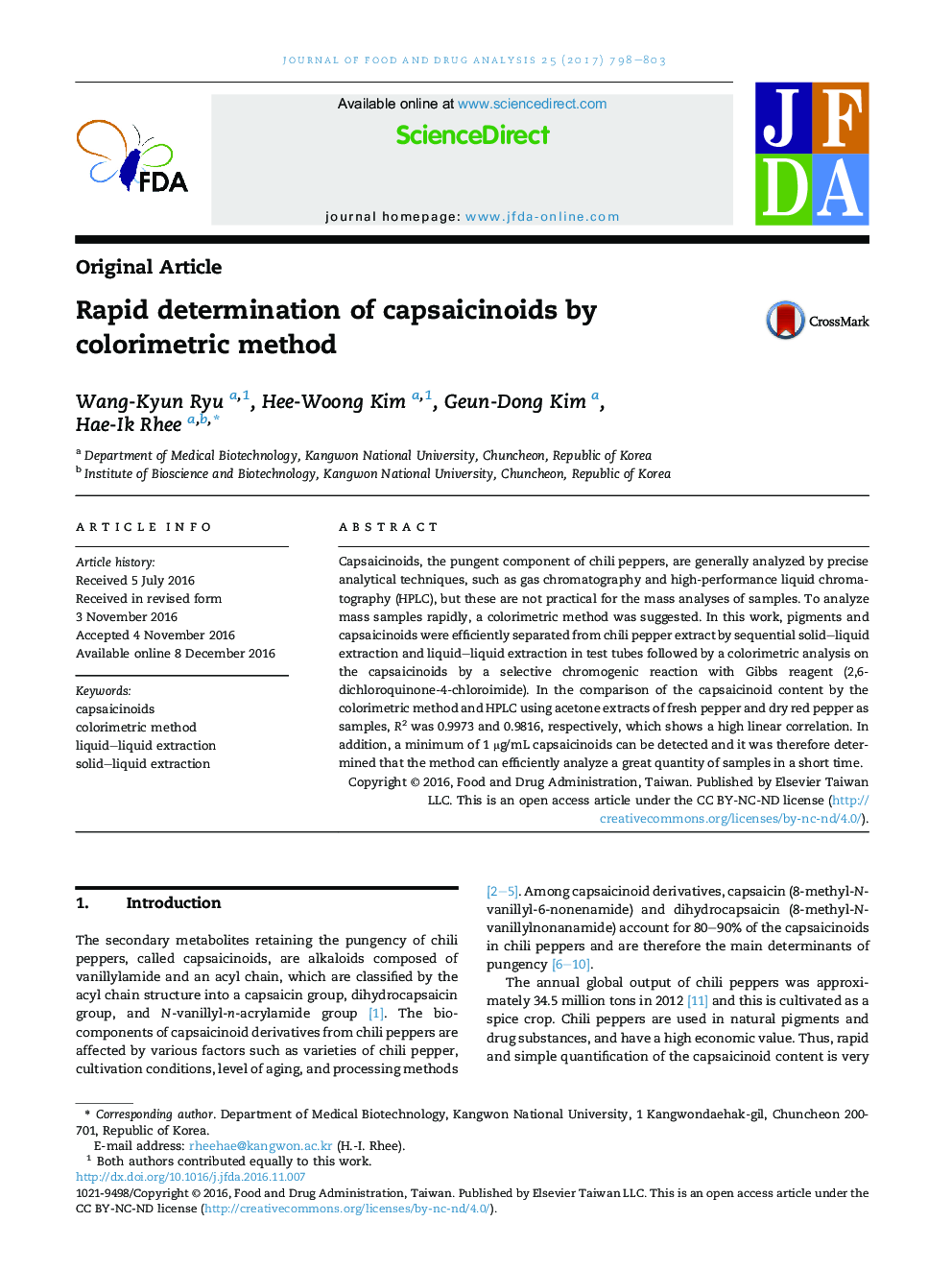| Article ID | Journal | Published Year | Pages | File Type |
|---|---|---|---|---|
| 5550992 | Journal of Food and Drug Analysis | 2017 | 6 Pages |
â¢Capsaicinoids were separated from chili pepper extract by technical extraction.â¢Capsaicinoids were detected by a reaction with Gibbs reagent.â¢The colorimetric method showed a high linear correlation with high-performance liquid chromatography.â¢In addition, a minimum of 1 μg/mL capsaicinoids can be detected by the colorimetry.
Capsaicinoids, the pungent component of chili peppers, are generally analyzed by precise analytical techniques, such as gas chromatography and high-performance liquid chromatography (HPLC), but these are not practical for the mass analyses of samples. To analyze mass samples rapidly, a colorimetric method was suggested. In this work, pigments and capsaicinoids were efficiently separated from chili pepper extract by sequential solid-liquid extraction and liquid-liquid extraction in test tubes followed by a colorimetric analysis on the capsaicinoids by a selective chromogenic reaction with Gibbs reagent (2,6-dichloroquinone-4-chloroimide). In the comparison of the capsaicinoid content by the colorimetric method and HPLC using acetone extracts of fresh pepper and dry red pepper as samples, R2 was 0.9973 and 0.9816, respectively, which shows a high linear correlation. In addition, a minimum of 1 μg/mL capsaicinoids can be detected and it was therefore determined that the method can efficiently analyze a great quantity of samples in a short time.
Graphical abstractA colorimetric method of capsaicinoids quantification.Download high-res image (188KB)Download full-size image
